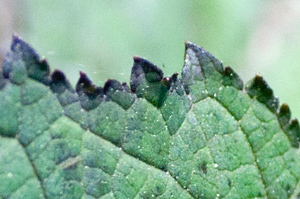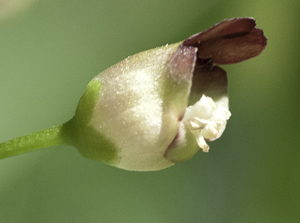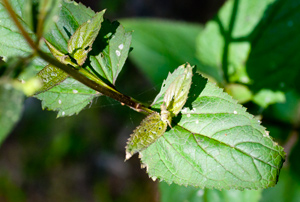Common Figwort
Leaves and stem
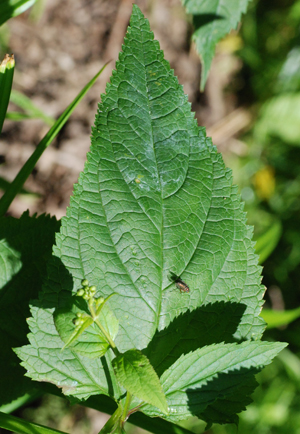
The figwort can be quite tall (up to 80 cm, or perhaps more in 'ideal' conditions). It has an 'angled' or square stem (in cross section).
The leaves arise as opposite pairs and are oval and pointed. The leaves have short stalks (petioles) and are clearly toothed.
Sometimes, the young leaves may have a slight "purple" tinge to them.
Flowers and Fruits
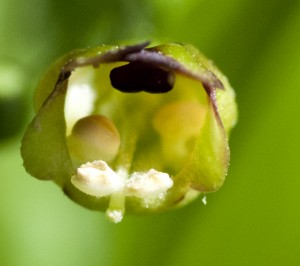
The two lipped flowers are relatively small and inconspicuous, and occur in small clusters. Flowering time is June through to August.
The upper lip has two red - brown or maroon lobes whereas the lower lip has three lobes and is greenish. There are five sepals which have membranous edges.
There are four stamens in each flower, and another stamen which has no anther - this is a staminode.
Ecology and other notes
The figworts belong to the family - Scrophulariaceae, which includes foxgloves, snapdragons, toadflaxes and cow wheats.
The common figwort is found in damp (deciduous) woodland and hedgerows. It has a foetid smell
It has a tuberous root system - of small nodules - hence its specific name : nodosa. Other names for this plant are Knotted Figwort, Throatwort.
At one time, it was used by herbalists in the treatment of a number of conditions - further information here.
There are other species of figwort - yellow figwort, balm leaved figwort and water figwort.
